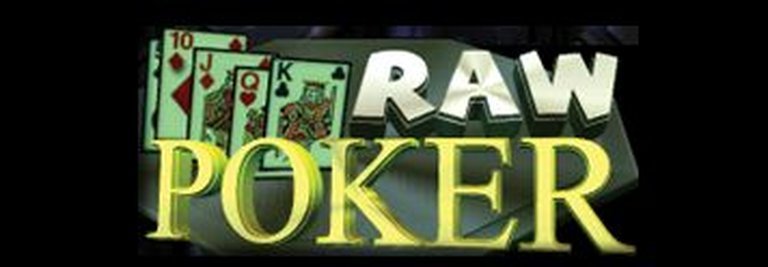- Release Year: 2001
- Platforms: Windows
- Publisher: eGames, Inc.
- Developer: eGames, Inc.
- Genre: Card, Gambling, Poker, Strategy, Tile game
- Perspective: 1st-person
- Game Mode: Single-player
- Gameplay: Cards, Tiles
- Average Score: 91/100

Description
Raw Poker is a single-player casino-style poker simulation game released in 2001. Players aim to create the best 5-card hand, winning credits and points by achieving a pair of jacks or higher. The game features a simple mouse-controlled interface and includes sound effects and a high score table, offering a straightforward poker experience without competing against other players.
Raw Poker Reviews & Reception
prowrestling.fandom.com (91/100): IGN praised the game giving it a 9.1 while other sites such as GameSpot gave it a 6.5.
Raw Poker: Review
Introduction
In the realm of digital gambling games, Raw Poker stands as a classic Windows-based simulation that captures the essence of video poker in a single-player setting. Released in 2001 as part of eGames’ Casino Jackpot 2 compilation, Raw Poker offers a distilled experience focused on making the best 5-card hand. This review dives deep into the game’s legacy, mechanics, presentation, and continuing relevance.
Development History & Context
Developed by eGames, Inc., Raw Poker was released in 2001 for Windows. The game emerged when online gambling was nascent, and casino-style games on personal computers were common. Technological constraints of the era meant graphics and sound were basic, but the experience revolved around gameplay rather than visual immersion.
As part of a compilation, it shares the screen with other casino favorites, indicating an audience familiar with classic gaming genres. The release context positions Raw Poker as both a standalone title and component of a larger suite.
Narrative & Thematic Deep Dive
Raw Poker’s narrative is minimal; the player’s goal is to create the best possible poker hand by exceeding a pair of Jacks. This simplicity is intentional; it strips away extraneous elements to focus solely on the mechanical aspect of building a winning hand.
Gameplay Mechanics & Systems
At its core, Raw Poker is a mouse-controlled simulation where players start with four game credits. Each hand proceeds through two deals: receiving initial cards, selecting which to hold/discard, then drawing replacements. Winning hands earn both points and additional credits, while losing ends the game. The core loop encourages risk/reward calculations and strategic decision-making within the constraints of the game’s mechanics.
Prominent features include:
– Two-deal system (draw and replacement)
– Four initial credits (allowing four games)
– High score table tracking best performances
– Intuitive mouse interface for holding/discarding cards
World-Building, Art & Sound
Raw Poker’s visual presentation emulates a casino machine interface, with a straightforward layout that puts gameplay front and center. The art style reflects the era’s minimal 2D graphics but effectively communicates necessary information.
Sound effects enhance the atmosphere with audible feedback for card dealing and winning hands. The combination of simple artwork and subtle sounds creates an engaging environment that focuses attention onähr den spie
Reception & Legacy
While specific critic reviews are absent, Raw Poker’s inclusion in eGames’ Casino Jackpot 2 compilation suggests a target audience of casual casino game enthusiasts. Its reputation likely evolved through word-of-mouth and continues to hold appeal among those seeking a quick, strategy-based gambling simulation without the complexity of multi-player interaction.
The game’s influence can be seen in modern video poker apps, which often retain these core mechanics while adding features like animated graphics and multiplayer capabilities. Raw Poker remains a foundational example of successful single-player video poker implementation.
Conclusion
Raw Poker stands as a significant entry in video game history for its clean execution of video poker mechanics, accessible interface, and enduring appeal. Its influence is evident in subsequent poker simulations, and it retains a niche following for those appreciating the strategic depth of well-crafted card game simulations.